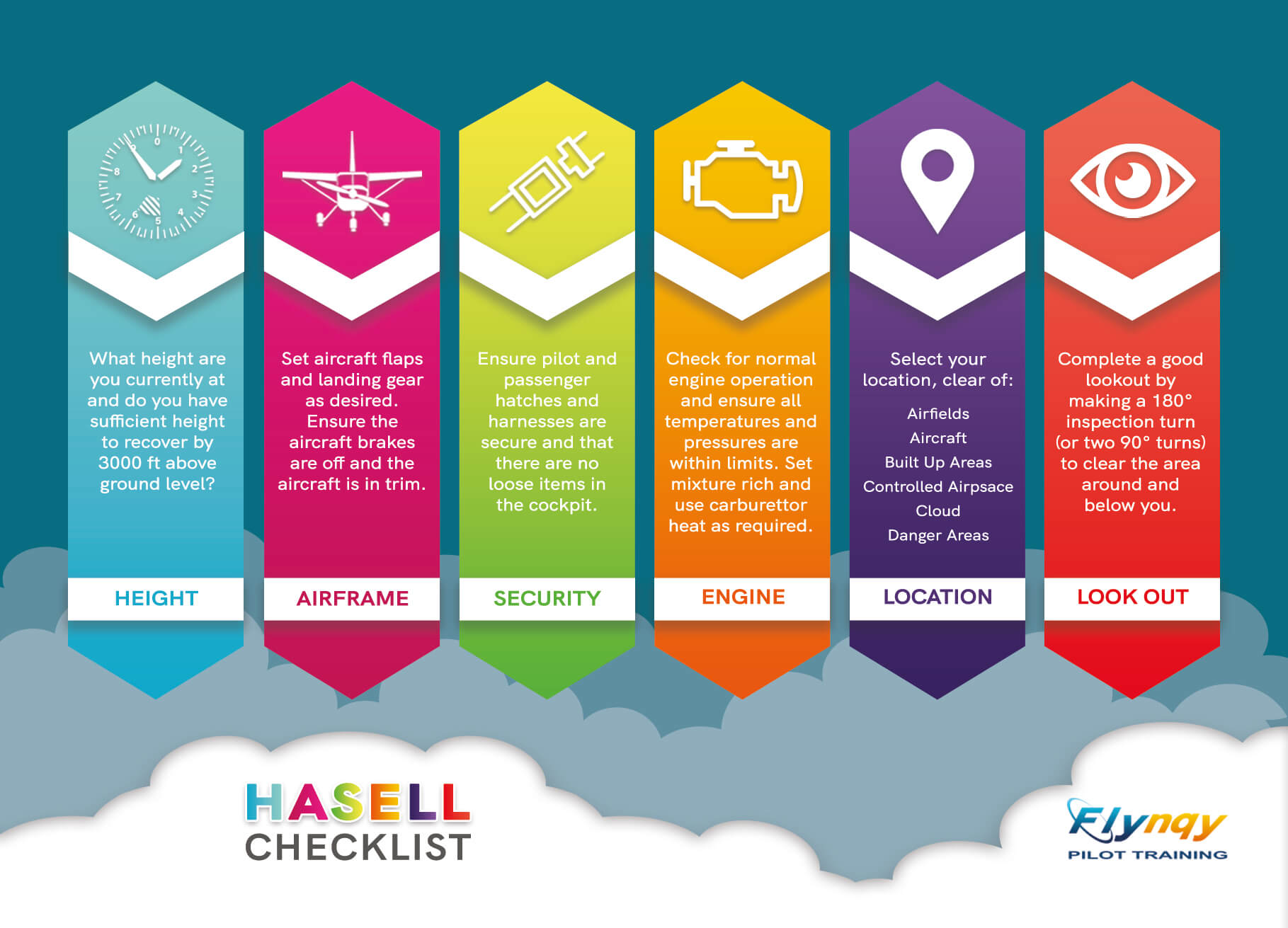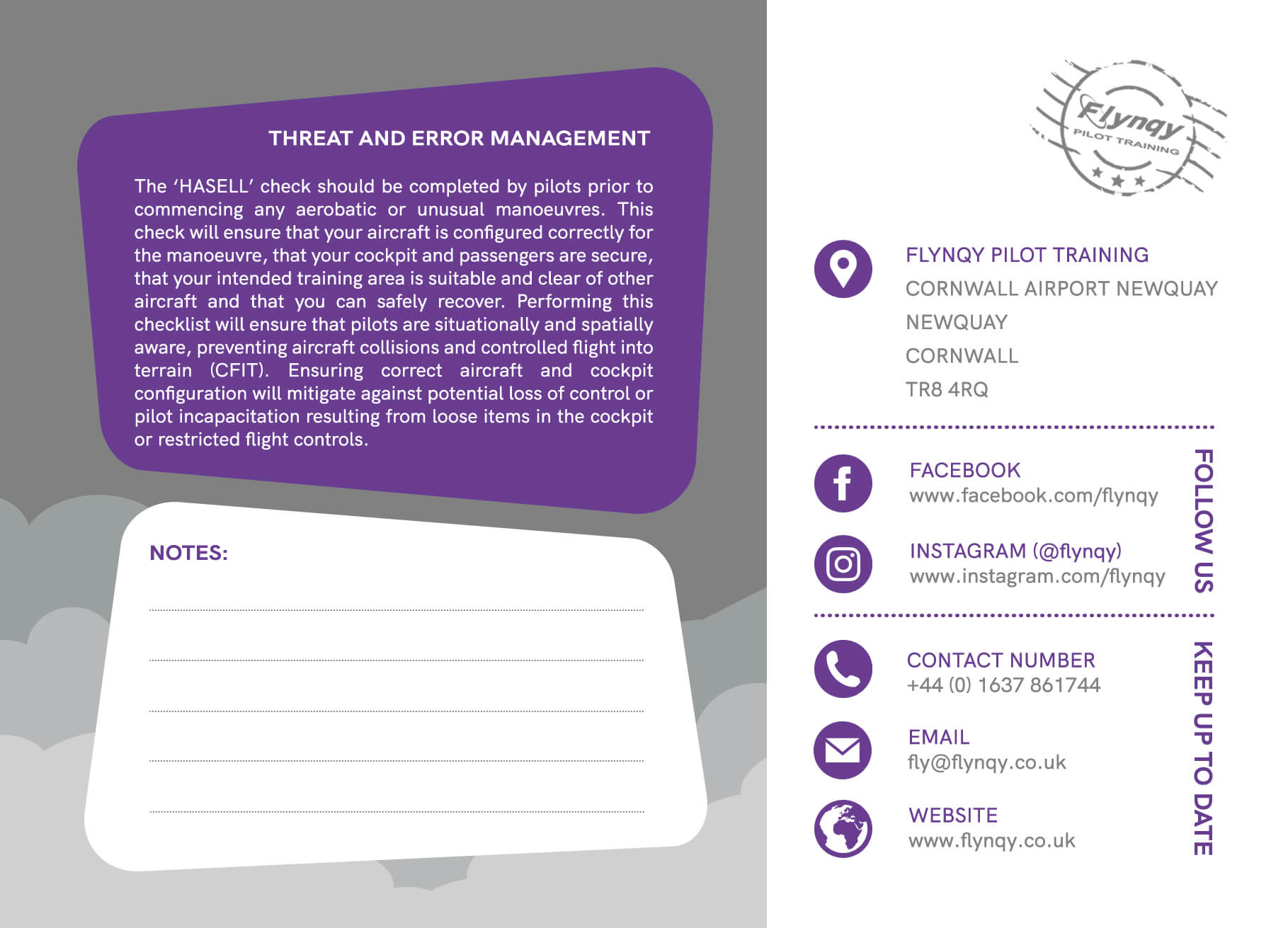
Christmas Giveaway 2023: Question 12 - HASELL Check
Question
Pilots should complete the 'HASELL' check before commencing any aerobatic or unusual manoeuvres. This check will ensure that your aircraft is configured correctly for the manoeuvre, that your cockpit and passengers are secure, that your intended manoeuvre area is suitable and clear of other aircraft and that you can safely recover. What does the 'A' in 'HASELL' stand for?
- Airspace
- Airfields
- Airframe
- Altitude
Explanation
Pilots should complete the HASELL check before completing any aerobatic or unusual manoeuvres, particularly those that may result in the aircraft entering unusual attitudes. For PPL training this is commonly taught and performed before completing the stalling and spinning elements of the course.
The HASELL check will ensure that your aircraft is configured correctly for the manoeuvre, that your cockpit and passengers are secure, that your intended training area is suitable and clear of other aircraft and that you can safely recover. The check promotes pilot situational and spatial awareness and also helps mitigate against Controlled Flight Into Terrain (CFIT) and Loss of Control (LOC) accidents.
So, what does the HASELL check stand for?
HEIGHT
What height are you currently at, and do you have sufficient height to recover? The CAA advises that this will depend on the experience of the pilot, but it is generally recommended that pilots should commence manoeuvres at no less than 5,000 ft above ground level (AGL), and all manoeuvres should be recovered and completed by 3,000 ft AGL.
AIRFRAME
Set aircraft flaps and landing gear as desired; this will be a clean configuration for most manoeuvres. Ensure that the aircraft brakes are off and the aircraft is in trim.
SECURITY
Ensure that the pilot and passenger hatches and harnesses are secure, that any doors/canopy are secure, and that no loose items are in the cockpit.
ENGINE
Check for normal engine operation, verify that all temperatures and pressures are within limits and ensure that your engine instruments read normally. Set the mixture to rich, use carburettor heat as required, and confirm adequate fuel is selected.
LOCATION
Select your location, clear of:
- Airfields
- Aircraft
- Built-up Areas
- Controlled Airspace
- Cloud
- Danger Areas
An area offering forced landing or diversion options in the event of engine problems is wise, and we also recommend locating a prominent landmark to assist orientation.
LOOKOUT
Complete a good lookout by making at least a 180 inspection turn (or two 90 turns) to clear the area around and below you.
Between sequences of manoeuvres, particularly when the aircraft configuration has not been altered, this check is often abbreviated to HELL:
- HEIGHT
- ENGINE
- LOCATION
- LOOKOUT
 Click to enlarge
Click to enlarge Click to enlarge
Click to enlarge